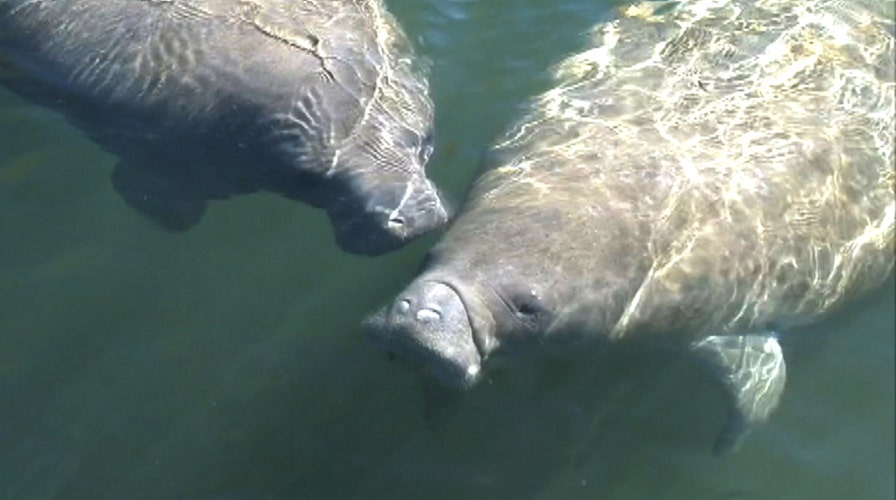Looming federal regulations worry manatee tour operators
Tour guides concerned forthcoming rules will hurt local economy
Just like northerners, manatees, too, head south to Florida for the winter -- huddling in Citrus County for the season and staying warm to survive.
This annual, spectacular gathering has in turn created a booming tourism attraction. But the federal government is scrambling to try to keep the species protected, planning new regulations that could be released any day now – and local tour operators are worried the forthcoming rules will hurt the local economy.
"It's all about protecting the manatee, but whatever they do, you cannot do it without hurting the little guy,” said Capt. Broderick Jenkins, of Manatee Fun Private Tours. He’s one of about 40 “swim with the manatee” guides in the area, and says he’s already seeing his manatee profits shrink.
Soon, the Department of the Interior is expected to issue new and tighter regulations over human activity with the manatees in this area of Florida.
Private businesses who make their living on manatee tourism wonder how severe the new restrictions will be and whether — unlike the manatee — they’ll end up sinking.
Tour guides in the area typically charge $50 per person.
What Jenkins and others suspect will happen is a push to limit snorkelers inside the manatee-heavy Three Sisters Spring to no more than 13 at a time -- and reduce the number of tour operators to perhaps just five. This would force the rest out of business, in a town where manatee tourism rakes in an estimated $60 million-80 million a year.
The manatee craze, though, has put the government in a tough spot.
In Crystal River, where manatee logos and a manatee statue adorn City Hall, record crowds this week are visiting Three Sisters Spring, where the fresh water stays a comfortable 72 degrees year-round.
On cold days, tourists can walk the boardwalk and stare down at 300 to 500 manatees all at once -- like a big pool full of floating potatoes. They can also swim with the manatees, snorkeling right alongside the huge mammals – yet at times, there can be a hundred swimmers in the middle of a hundred manatees, overcrowding them like sardines.
The government originally placed manatees on the Endangered Species List in 1973, back when there were just hundreds left and extinction looked imminent.
Today, U.S. Fish and Wildlife reports there are now more than 6,000 manatees -- and this year, will almost certainly downgrade their status from “endangered” to “threatened.”
But the agency says the manatees still need the government’s help, which is why the new Interior regulations are being produced.
"This is their cave,” said Ivan Vicente, with U.S. Fish and Wildlife. “They come here in the winter, they come here to survive, so we do what we need to protect them.”





